Who was the owner of the photo album from Dachau?
Bruce Sadler's father was a soldier in the US Army during World War II. He was active in the European Theatre of Operations and brought back from Germany a photo album that currently puzzles his son. Who was the original owner and how did it end up in the location where his father found it? The search caught our attention and we asked Bruce Sadler some questions about it via e-mail. The photos can be viewed on Flickr.
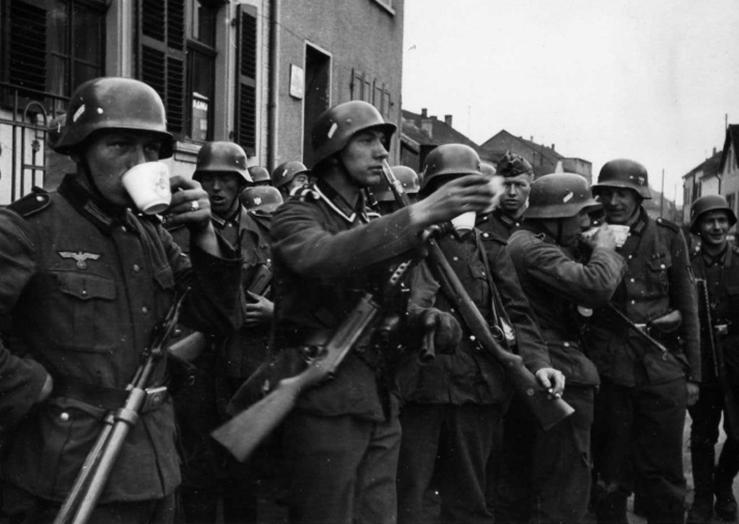 Bundesarchiv, via Bruce Sadler
Bundesarchiv, via Bruce Sadler
When did you first see this album and what were your first impressions?
I remember first seeing the album in our attic when I was about 13 years old. I had some wild ideas of how my father could have gotten this album since the pictures where of the German side of the war.
Your father took the album with him as a soldier in Europe during World War II. In which unit did he serve and did he ever tell you about his experiences?
He was in the 838th AA unit of the US Army. Dad would tell of his training in Texas and being shipped out from New York and landing in England. It seems his unit went to quite a few countries. He had no trouble telling about some things but when I started to talk about Dachau he would break down and cry. His unit was assigned to guard the camp after it was liberated. My mom and brothers told of how he would have nightmares and wake up crying. I know it was hard to go camping because the smell of the canvas tents would remind him of sleeping in the small tents they had.
Where did your father find this album and why did he take it to the US? Is anything known about the original owners?
From what we could find out dad found the album in Dachau while he was there. He did say he could have brought back duffle bags full of lugers and others things but decided on taking the album and three hard cover books. It turns out two of the books are of the 1936 Olympics s summer/winter games. The third book is the life of Adolf Hitler. The books were printed by a German cigarette company back in 1936. My dad always said that the photo’s had no import meaning or value.
There were no marking on the album to say who the owner could have been. Unfortunately I did not take any pictures of what the album looked like before taken the pictures out. I do remember the cover was red and photos were on black paper. I still have the posts that held the book together.
You are examining the pictures. Among others, the German magazine Spiegel already covered them. Have you already made any interesting discoveries?
This one below is taken by *Walter Henisch Dec 10, 1941 in a town called Rzhev. On January 11 or 12 1942 Stalin ordered the town to be smashed to keep the German army from advancing into Moscow. So this might be the last picture taken of the town before the bombing began. What could have been the reason this picture was taken? It was strange to find some of the text was in English. The numbers that are on the left helped find the negative and frame. All of the pictures have some kind of numbers on them. There are other interesting stories behind some of the picture that I could probably go on for some time. I did find out that this church is still standing today. One of the pictures that I wondered about is why this bridge was built like this. It was to keep trucks and tanks from crossing since they could not make the sharp turns. This bridge was in the town of Rzhev. Their local museum was happy to get copies of these pictures.
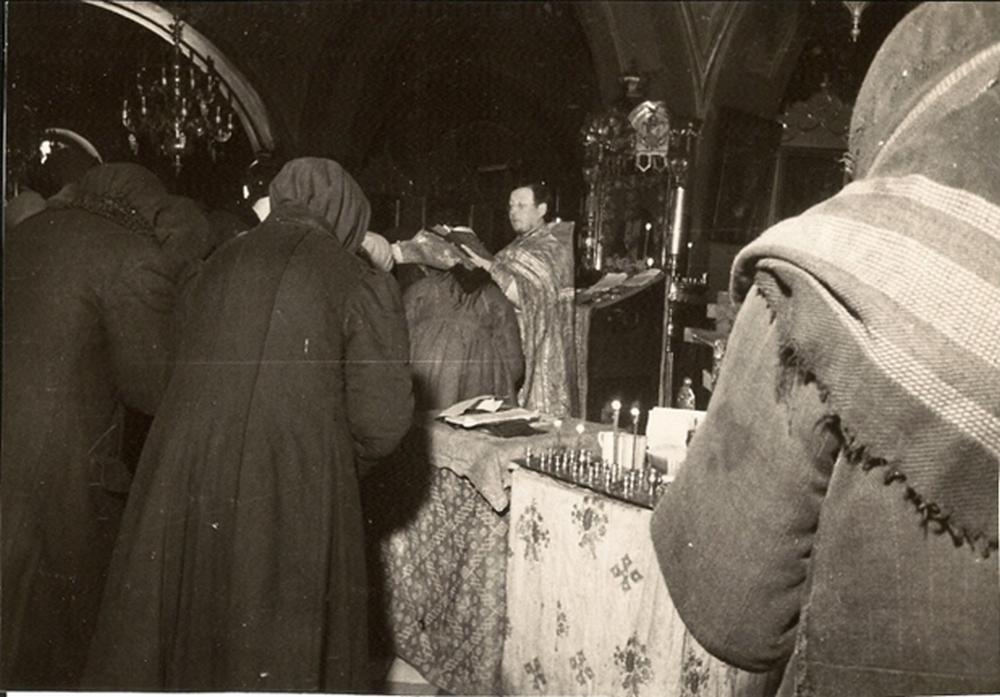 Bruce Sadler
Bruce Sadler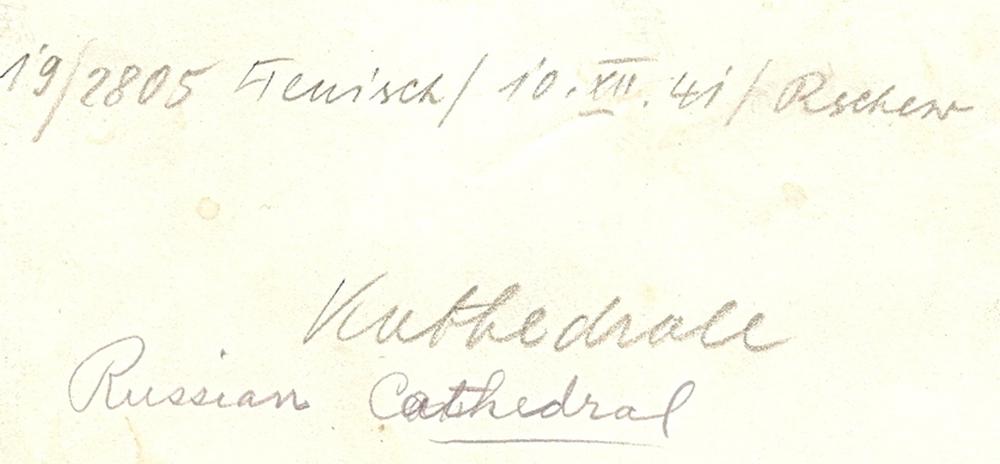
*Walter Henisch was a war correspondent for the German army and won several awards as such. Also the Federal Republic keeps the rights to this PK-photo.
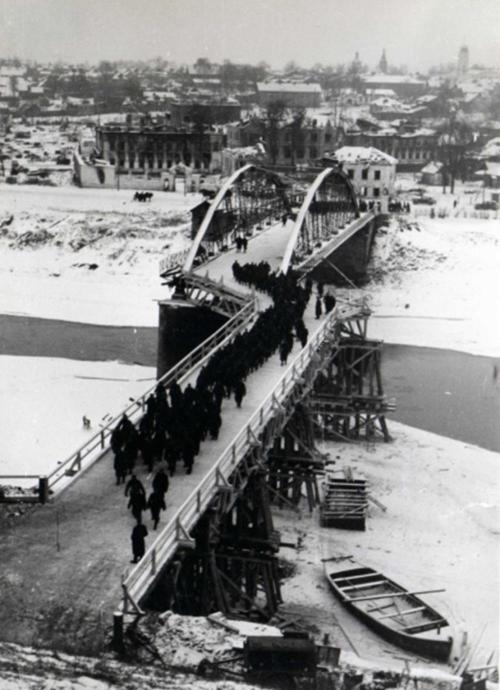 Bundesarchiv, via Bruce Sadler
Bundesarchiv, via Bruce Sadler
The album also contains many German propaganda photos. What do these photos show? Do you have any idea how the original owner got these photos?
Since the photos cover a large range of place’s and dates (1933 France to 1942) battle field, dinners, funerals, ceremonies, local town folk, officers and POWs. This photo below might have been used for propaganda. If this was a real battle where are their helmets and how can someone with a camera be in the fox hole at that time if not propaganda purposes.
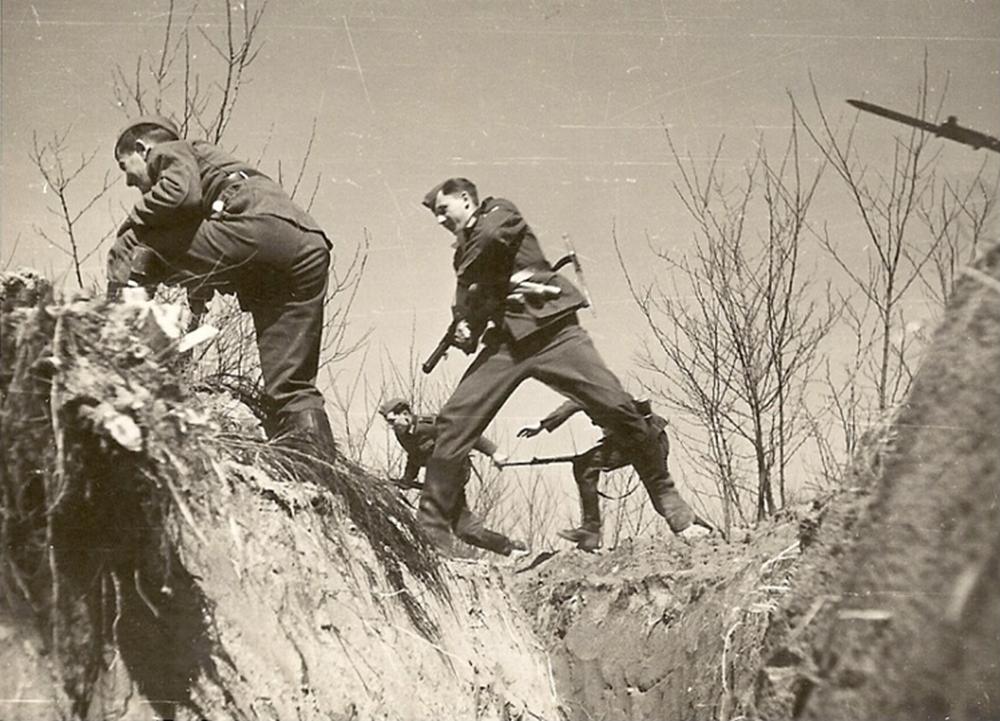 Bundesarchiv, via Bruce Sadler
Bundesarchiv, via Bruce Sadler
The original owner could have been part of this group who are going over pictures on the table (photo below). But this is just a guess.
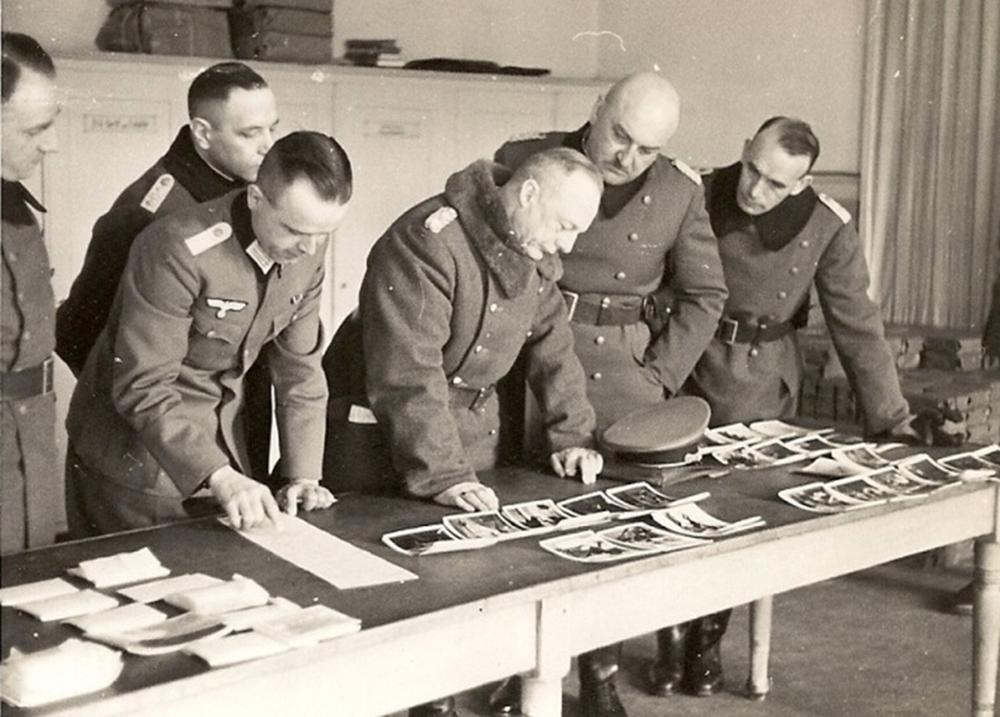 Bundesarchiv, via Bruce Sadler
Bundesarchiv, via Bruce Sadler
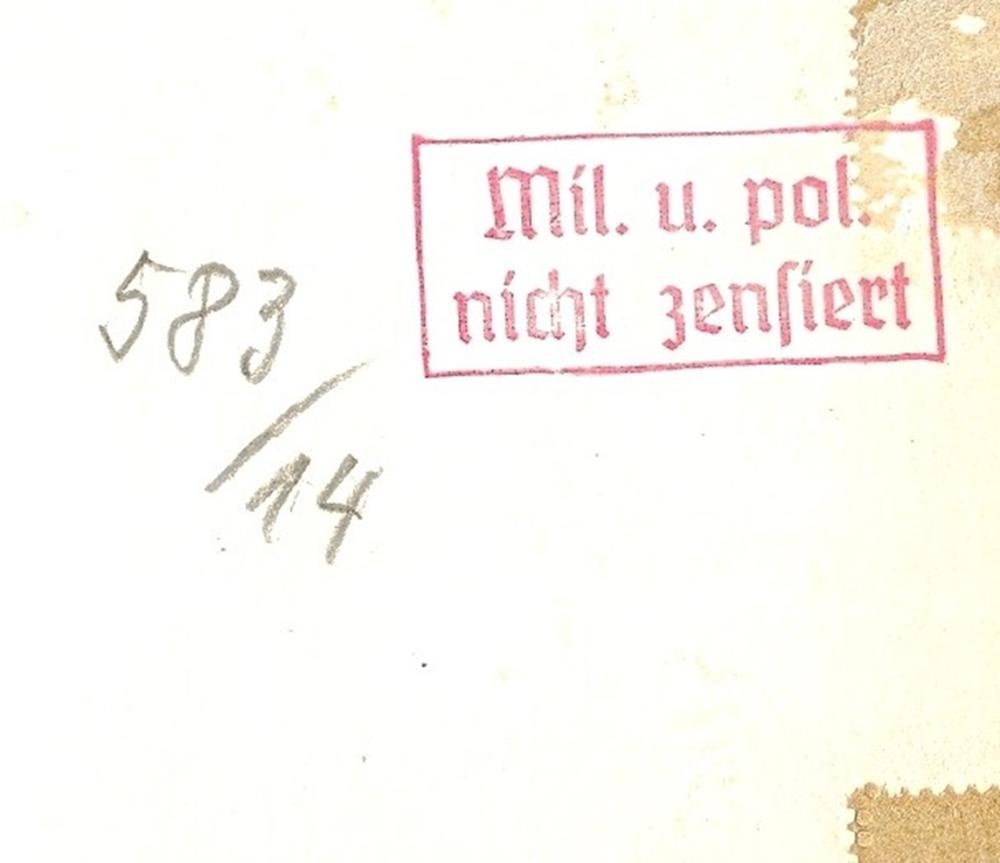 How did the owner get all of these pictures I will probably never know. Since all pictures taken by German war correspondent’s were to be turned over to the state. There are 25 pictures with this stamp on the back ‘Not censored by the military and political departments’. How did this photo and others like it get the stamp? I also found that the photo paper that was used is “Afga Brovira” print on the back just like Kodak was printed on the back. The paper was used by the Nazis in the late 1930 to late 40s.
How did the owner get all of these pictures I will probably never know. Since all pictures taken by German war correspondent’s were to be turned over to the state. There are 25 pictures with this stamp on the back ‘Not censored by the military and political departments’. How did this photo and others like it get the stamp? I also found that the photo paper that was used is “Afga Brovira” print on the back just like Kodak was printed on the back. The paper was used by the Nazis in the late 1930 to late 40s.
What drives you to investigate the origins of this photo album almost 80 years after the war, and how can our visitors help?
What drives me to investigate these pictures is that someone out there might recognize a family member or friend. Some time ago a lady said I might have a picture of her mother that worked the Minsk radio factory (dated Feb 17, 1942) long with her dad and uncle. And just in the last few weeks I received an email saying I had a picture of his grandfather as a POW. I showed the news article that was printed in Rzhev Russia to a lady and she broke down and cried because she always wanted to know what happened there since her town was only a few miles away. It seems no matter what side of the war you are on there are people looking for their loved ones. This is way I hope your readers would be able to help.
If you want to know more about the pictures or contact Bruce Sadler, please contact us.
 Bundesarchiv, via Bruce Sadler
Bundesarchiv, via Bruce SadlerWhen did you first see this album and what were your first impressions?
I remember first seeing the album in our attic when I was about 13 years old. I had some wild ideas of how my father could have gotten this album since the pictures where of the German side of the war.
Your father took the album with him as a soldier in Europe during World War II. In which unit did he serve and did he ever tell you about his experiences?
He was in the 838th AA unit of the US Army. Dad would tell of his training in Texas and being shipped out from New York and landing in England. It seems his unit went to quite a few countries. He had no trouble telling about some things but when I started to talk about Dachau he would break down and cry. His unit was assigned to guard the camp after it was liberated. My mom and brothers told of how he would have nightmares and wake up crying. I know it was hard to go camping because the smell of the canvas tents would remind him of sleeping in the small tents they had.
Where did your father find this album and why did he take it to the US? Is anything known about the original owners?
From what we could find out dad found the album in Dachau while he was there. He did say he could have brought back duffle bags full of lugers and others things but decided on taking the album and three hard cover books. It turns out two of the books are of the 1936 Olympics s summer/winter games. The third book is the life of Adolf Hitler. The books were printed by a German cigarette company back in 1936. My dad always said that the photo’s had no import meaning or value.
There were no marking on the album to say who the owner could have been. Unfortunately I did not take any pictures of what the album looked like before taken the pictures out. I do remember the cover was red and photos were on black paper. I still have the posts that held the book together.
You are examining the pictures. Among others, the German magazine Spiegel already covered them. Have you already made any interesting discoveries?
This one below is taken by *Walter Henisch Dec 10, 1941 in a town called Rzhev. On January 11 or 12 1942 Stalin ordered the town to be smashed to keep the German army from advancing into Moscow. So this might be the last picture taken of the town before the bombing began. What could have been the reason this picture was taken? It was strange to find some of the text was in English. The numbers that are on the left helped find the negative and frame. All of the pictures have some kind of numbers on them. There are other interesting stories behind some of the picture that I could probably go on for some time. I did find out that this church is still standing today. One of the pictures that I wondered about is why this bridge was built like this. It was to keep trucks and tanks from crossing since they could not make the sharp turns. This bridge was in the town of Rzhev. Their local museum was happy to get copies of these pictures.
 Bruce Sadler
Bruce Sadler
*Walter Henisch was a war correspondent for the German army and won several awards as such. Also the Federal Republic keeps the rights to this PK-photo.
 Bundesarchiv, via Bruce Sadler
Bundesarchiv, via Bruce SadlerThe album also contains many German propaganda photos. What do these photos show? Do you have any idea how the original owner got these photos?
Since the photos cover a large range of place’s and dates (1933 France to 1942) battle field, dinners, funerals, ceremonies, local town folk, officers and POWs. This photo below might have been used for propaganda. If this was a real battle where are their helmets and how can someone with a camera be in the fox hole at that time if not propaganda purposes.
 Bundesarchiv, via Bruce Sadler
Bundesarchiv, via Bruce SadlerThe original owner could have been part of this group who are going over pictures on the table (photo below). But this is just a guess.
 Bundesarchiv, via Bruce Sadler
Bundesarchiv, via Bruce Sadler
What drives you to investigate the origins of this photo album almost 80 years after the war, and how can our visitors help?
What drives me to investigate these pictures is that someone out there might recognize a family member or friend. Some time ago a lady said I might have a picture of her mother that worked the Minsk radio factory (dated Feb 17, 1942) long with her dad and uncle. And just in the last few weeks I received an email saying I had a picture of his grandfather as a POW. I showed the news article that was printed in Rzhev Russia to a lady and she broke down and cried because she always wanted to know what happened there since her town was only a few miles away. It seems no matter what side of the war you are on there are people looking for their loved ones. This is way I hope your readers would be able to help.
If you want to know more about the pictures or contact Bruce Sadler, please contact us.
Used source(s)
- Source: Bruce Sadler / TracesOfWar
- Published on: 11-08-2024 20:58:52
Related news
- 11-'24: Postal artifacts provide a vibrant testament to the experiences of the Dutch people during WWII
- 10-'24: DigitalBattlefieldTours unlocks military tactics to a wide audience
- 08-'24: Researching his father’s WWII history became a passion for Steve Snyder
- 07-'24: The British people welcomed African American servicemen with open arms
- 06-'24: "There seems to never be an end to cool historic places to cover"
Latest news
- 03-03: A WWII helmet returns home 80 years after having been lost at Remagen Bridge, Germany
- 16-02: Armin T. Wegner and his letter to Hitler
- 14-02: The hugely popular ‘Standing with Giants’ installation returns to the British Normandy Memorial
- 27-01: Russia focuses on Soviet victims of WW2 as officials not invited to Auschwitz ceremony
- 27-01: Oswald Kaduk, ‘Papa Kaduk’ or a monster??
- 12-'24: Christmas and New Year message from our volunteers
- 11-'24: New book: Righteous Behind Barbed Wire
- 11-'24: Postal artifacts provide a vibrant testament to the experiences of the Dutch people during WWII
- 10-'24: DigitalBattlefieldTours unlocks military tactics to a wide audience
- 10-'24: Lily Ebert, Holocaust Survivor, Author and TikTok Star, Dies at 100


